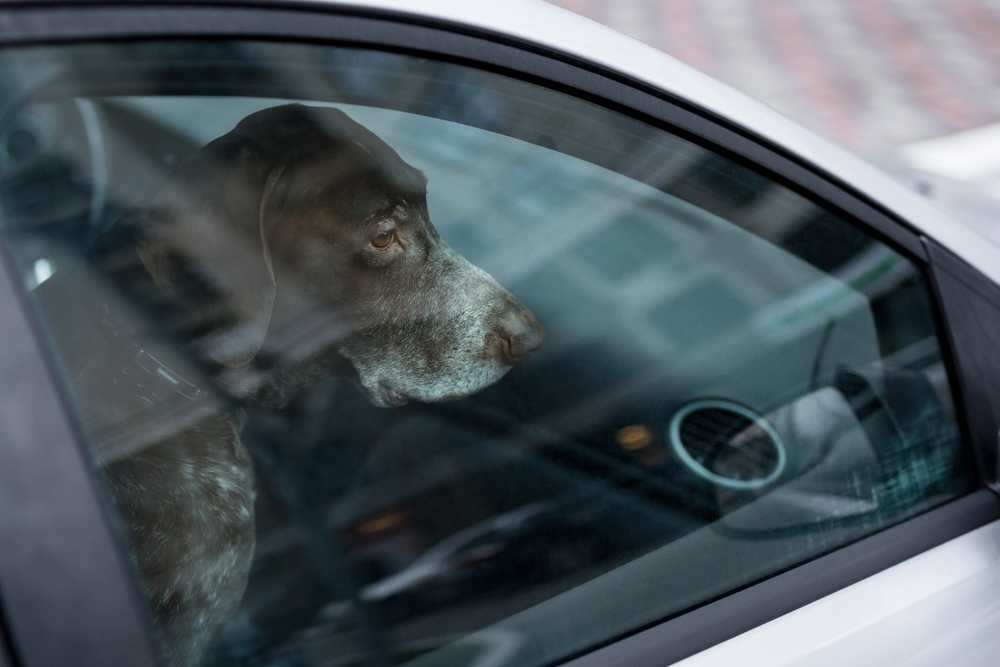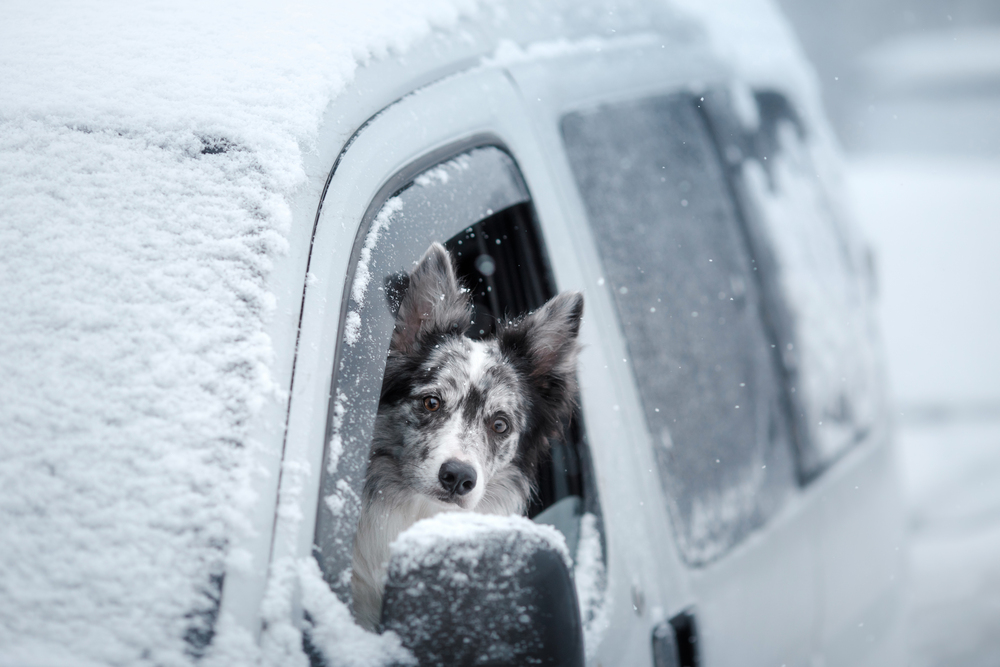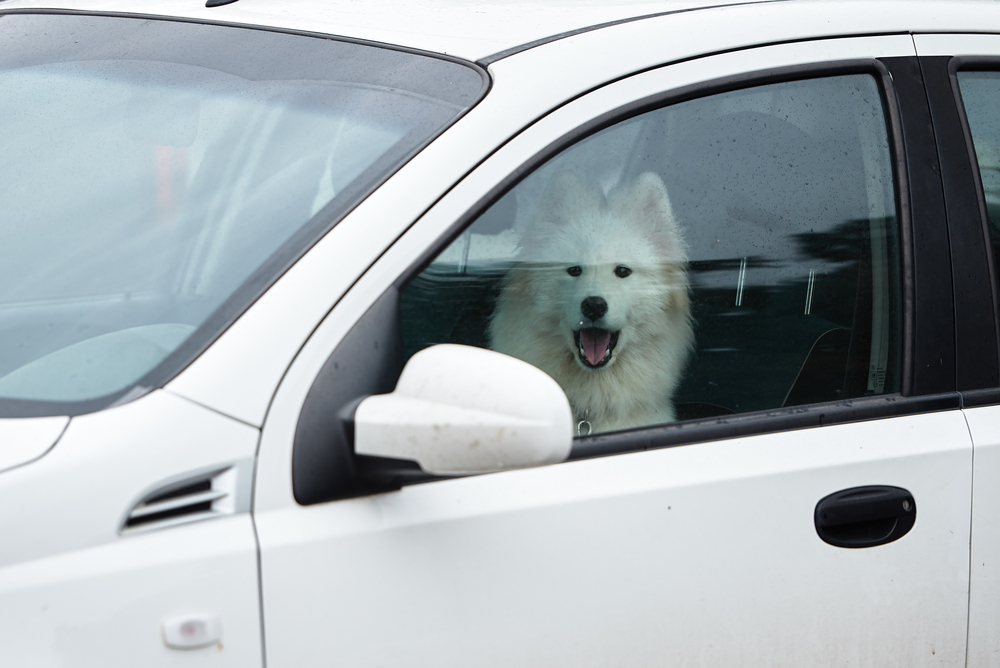
Is It Illegal to Leave Your Dog in Your Car?
As a pet owner, your primary concern is always the well-being of your furry friend, and you naturally want to ensure their safety, especially when traveling together. California, like many states, has established laws designed to support those good intentions by ensuring that pets are protected from potentially dangerous conditions when left in vehicles. These laws aren’t just about punishment—they’re in place to help pet owners avoid accidentally putting their pets in harm’s way during day-to-day activities.
California Penal Code 597.7 reflects this commitment, stating that leaving a dog (or any other animal) in a car under conditions that could harm their health or safety is against the law. These conditions include excessive heat or cold, inadequate ventilation, or situations where the animal does not have access to water, all of which could cause discomfort or suffering. The law is meant to safeguard animals from dangers such as heatstroke or hypothermia, which can develop much faster than many people realize, even on mild days.

Boarding Clients!*Discount does not apply during holiday/peak rate periods.

Safe Temperatures to Leave a Dog in the Car
In most cases, it’s not a good idea to leave a dog in a parked car for more than a few hours, particularly in slightly warmer weather. Extreme temperature swings inside a vehicle pose a serious health risk. A parked car can trap in as much heat as a greenhouse, regardless of how pleasant the weather may be outside. Even with the windows slightly ajar, the inside of a car can heat beyond the outside temperature up to 20°F more in as little as 10 minutes on a mild day, say the experts.
Take a 70°F day as an example; it only takes 10 minutes for the temperature inside a car to reach 90°F, and in 20 minutes it can reach 100°F. Extreme heat can swiftly lead to heatstroke or death in dogs because their core temperature is higher than that of humans and they do not perspire to reduce this temperature. Particularly at risk are little dogs, older dogs, and brachycephalic (short-nosed) dogs. Hence, no matter how mild the weather seems, it is never a good idea to leave a dog unattended in a car, according to veterinarians and animal experts.
When Is It Too Hot to Leave a Dog in the Car?
It is already risky to leave a dog in a vehicle when the outside temperature is more than 70 degrees Fahrenheit. When compared to humans, dogs’ ability to cool down is severely lacking. Their primary method of temperature regulation—panting—becomes useless in hot, poorly ventilated environments, such as a car. A car’s interior can reach a lethal 104 degrees Fahrenheit in as little as twenty minutes on a 75-degree Fahrenheit day.
A dog suffers from heatstroke if its core temperature rises over 104 degrees Fahrenheit. Signs and symptoms may manifest as shallow breathing, excessive salivation, listlessness, nausea, vomiting, and, in the worst instances, coma or convulsions. Heatstroke can cause organ failure and death if not treated quickly. The critical temperature where multiple organ failure and impending death occur is around 107°F to 109°F.
Never forget that even a quick trip to run errands or a few groceries can be dangerous to a dog even at seemingly lower temperatures. Simply opening the windows won’t let in enough air or make much of a dent in the interior temperature. Typically, you shouldn’t leave your dog in the car under any circumstances when the temperature exceeds 70°F.
When Is It Too Cold to Leave a Dog in the Car?
Dogs are vulnerable to the effects of both heat and cold. It is typically believed that most dogs should not be left in a car, particularly without heating or insulation, when the temperature drops below 40°F. Most dogs, particularly smaller, older, or hairless breeds, are prone to hypothermia, though some with thick coats (such as Huskies or Malamutes) are better able to handle cold weather. Even in short bursts of cold weather, dogs of smaller stature or with thinner coats can experience discomfort or even death if left unattended for too long.
When it’s cold outside, a car can quickly cool down and trap the cold air inside, making it feel like a refrigerator. This can cause a decrease in the dog’s core temperature, which in turn can cause hypothermia symptoms like shaking, listlessness, and trouble breathing. The dog runs the risk of organ failure or death if the temperature drops too low for an extended period of time.

How Long Can You Leave a Dog in the Car?
The temperature inside a car can quickly rise to dangerous levels for pets, regardless of the weather outside. On a day with moderate weather (about 70°F), for example, a car’s interior can rise 20°F in only 10 minutes. On the flip side, a parked car’s interior temperature can plummet rapidly on chilly days, making it a hazardous environment for your pet. Because of the variables, there is no set time for how long you can leave a dog in the car.
In any case, it’s never a good idea to leave your dog alone in a vehicle, especially when the weather is extreme. Running errands, no matter how short, can be dangerous. Taking your dog out of the car or finding another safe option is always the best option when it comes to their health and well-being.
Furthermore, if a concerned citizen believes a pet is in imminent danger inside a parked vehicle, they are legally permitted to intervene by California law. Actually, there are certain circumstances under which people can lawfully break into a vehicle to save a dog that is showing symptoms of distress, hypothermia, or overheating. Thus, if a pet’s health is jeopardized, even a brief exposure to high temperatures in a vehicle can result in legal complications for its owners.
Laws About Leaving Dogs in Cars
Any animal, including dogs, cannot be left unattended in a vehicle in California if the conditions inside could endanger its health or safety. An animal cannot be left unattended in a parked vehicle in California if the weather, lack of ventilation, or any other factor poses a threat to its health and safety (California Penal Code 597.7). To protect animals from the carelessness of their owners, this law is enforced statewide, including in San Diego.
Key Elements of the Law
Temperature Regulation:
The regulation primarily deals with temperature as an issue. Leaving an animal in a vehicle without proper ventilation or climate control when the weather is excessively hot or cold is against the law. The animal’s life is in jeopardy because the temperature inside the vehicle can rapidly rise to harmful levels, particularly in the summer, or fall to dangerous levels, especially in the winter.
Ventilation:
Poor air circulation is one of several environmental factors taken into account by the law. The fast heat-trapping ability of a car makes it a lethal trap for dogs, even on days with moderate temperatures. Similarly, animals can be put at risk of hypothermia when there is insufficient ventilation during cold weather.
Lack of Water or Food:
Another lawbreaker is leaving a car with an animal without any food or water, especially in very hot weather.

The Consequences of Violating the Law
In the Golden State, there are criminal and civil consequences for breaking this law. A violation may result in a fine of up to $100 if, for instance, the animal does not incur significant injury.
A misdemeanor charge, with fines of up to $500 and possible jail time of up to six months, is levied if the animal sustains serious harm.
Additionally, owners may be subject to even harsher punishments under animal cruelty laws, which may lead to imprisonment and heavy fines, in the event that a dog sustains a serious injury or passes away as a consequence of carelessness.
Furthermore, pet owners run the risk of having custody of their animals taken away and may face civil liability if another party pays for the animal’s rescue, including medical expenses.
Rescue Laws and Good Samaritan Provisions
People who step in to save endangered animals are also protected by California law. Anyone may take reasonable action to free an animal from a vehicle if they feel the animal is in immediate danger of severe harm or death, according to the Good Samaritan law. This might involve breaking into the vehicle, but there are certain steps that a person must take:
- The individual must have a reasonable belief that the dog’s life is in immediate danger due to conditions like extreme heat or cold.
- Someone must first contact the authorities or animal control in their area before taking any action. Alternatively, they can leave a note on the vehicle describing the rescue and informing the owner of the pet’s whereabouts.
Local Regulations in San Diego
San Diego has stringent animal welfare standards that are in line with California’s laws, in addition to the statewide regulations. The laws pertaining to the protection of animals are strictly enforced by local animal control officers. It is highly encouraged for residents to report any instances where animals are left in hazardous conditions. Residents can report animal-related concerns by email at investigations@sdhumane.org or by phone at 619-299-7012. Animal welfare groups like the San Diego Humane Society are vital in spreading awareness and making sure pets are safe in vehicles.

Cars with "Dog Mode"
A number of manufacturers have included “dog modes” in their vehicles to ensure the safety of pets left in them. In addition to keeping the pet at a comfortable temperature and protecting it from potential danger, these features also serve to notify onlookers that the pet is under observation. Autos that have a “dog mode” that are well-known include:
Tesla: For the safety of your dog, Tesla has a “Dog Mode” that keeps the car at a comfortable temperature and alerts passers-by via the screen that their pet is OK.
Volvo: Even when parked, certain Volvo models can maintain a comfortable temperature for your pet thanks to their climate control features.
BMW: BMW has a reputation for being pet-friendly, and their BMW i3 model in particular has climate control and ventilation features that allow for 30-minute sessions even after the car is powered off.
Other famous car brands like Hyundai, Kia, and Genesis offer what’s called a ‘Utility Mode’ which has similar features to keep your pet comfortable for short periods of time while parked. Although these innovations do alleviate some concerns, it is still wise to keep pets supervised at all times.
Overall
No matter the weather, it’s never a good idea to leave a dog in a car. In just a matter of minutes, heatstroke can develop in extremely hot weather, and hypothermia in extremely cold weather. Violations of California’s stringent legislation meant to safeguard animals from harmful environments can result in fines and even jail time. While certain vehicles are equipped with features like “dog mode” that help regulate the temperature inside the car, these technologies are not foolproof. Technical malfunctions or an unexpected vehicle issue can still leave your dog at risk. For this reason, the best way to keep your pet safe is to never leave them in the car alone, regardless of the weather or technology available.


















